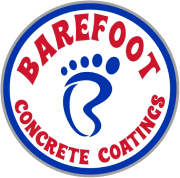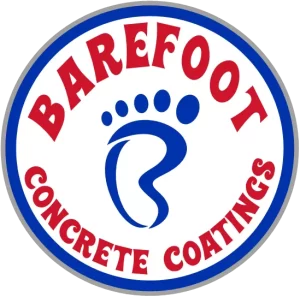What is a polyaspartic floor coating? Perhaps you’re looking to revamp your garage, or maybe you’re a facility manager in search of a durable flooring option. Either way, the benefits of polyaspartic floor coating services are numerous.
In this in-depth guide, we’ll dive into the pros and cons of polyaspartic coating services, explore the longevity of these coatings, and even examine their specific advantages when it comes to polyaspartic coatings for garage floors.
Why is this topic so significant, you ask? Well, making an informed decision about flooring solutions can save you both time and money. Let’s embark on this educational journey to unpack the benefits of polyaspartic floor coating applications.
What is a polyaspartic floor coating?
A Polyaspartic floor coating is a specific type of aliphatic polyurea coating. Belonging to the same chemical family as epoxy, polyaspartic is formulated to cure more rapidly and offer higher resistance to a wide array of external influences. Notably resistant to UV rays and chemical exposure, this type of coating is engineered to withstand everyday wear and tear while maintaining its appearance and structural integrity.
Commonly used for both industrial and residential flooring, polyaspartic coating can be applied over concrete surfaces, as well as other substrates. It is known for its quick curing capabilities, making it a favorable choice for projects that are time-sensitive. Although it shares several similarities with epoxy and urethane coatings, polyaspartic’s unique chemical composition sets it apart in terms of functionality and applicability.
What are the benefits of a polyaspartic floor coating?
Quick Curing Time
One of the most compelling benefits of polyaspartic floor coating applications is that these coatings have a rapid curing time. Unlike other types of floor coatings, polyaspartic can set and cure within a matter of hours rather than days.
This speed can be particularly beneficial for commercial settings where operational downtime is costly. For residential uses, this rapid curing is why polyaspartic coatings for garage floors are a homeowner’s dream come true. It enables you to reclaim your garage for use much quicker than other coating options.
High Durability
Durability is another facet where the benefits of polyaspartic coating services shine. This type of coating is engineered to resist a wide range of harmful influences, including UV rays, chemical spills, and mechanical abrasions. When you’re weighing the pros and cons of polyaspartic, its exceptional durability often tips the scale in its favor.
UV Resistance
The issue of UV resistance often surfaces when considering the benefits of polyaspartic floor coating. Some other types of coatings can turn yellow or degrade under prolonged exposure to sunlight. Polyaspartic remains steadfast and retains its original color and finish.
Chemical Resistance
One of the significant benefits of polyaspartic coating lies in its robust chemical resistance. Whether you’re dealing with industrial solvents, household cleaners, or automotive fluids, this coating keeps your floor safe from potential harm. Its resilience makes it an ideal choice for those weighing the pros and cons of polyaspartic coating services.
Application Versatility
When learning about what is a polyaspartic floor coating, people are often surprised to learn about its wide range of applications. Beyond industrial facilities and commercial establishments, polyaspartic coatings for garage floors are increasingly popular among homeowners looking for a resilient, long-lasting solution.
Low Volatile Organic Compounds (VOCs)
Last but not least, one of the eco-friendly benefits of polyaspartic floor coating is its low VOC content. Many traditional floor coatings emit a high level of VOCs, which are harmful both to the environment and human health. Polyaspartic’s low VOC emissions make it a greener, safer choice for flooring applications.
In summary, the benefits of polyaspartic coating are manifold. It offers a compelling array of features that make it a strong contender in the world of floor coatings. Whether you are a homeowner, a facility manager, or simply just want to learn what is a polyaspartic floor coating, understanding these benefits can guide you toward making a choice that best suits your needs.
Polyaspartic Floor Coating Considerations
Costs
While the benefits of polyaspartic coating services are numerous, cost remains a significant factor to consider. Polyaspartic coatings tend to be more expensive than other traditional coating options like epoxy or urethane. For those budget-conscious consumers who are interested in polyaspartic coatings, the initial investment may be a deterrent.
Application Skill Level
Another point to ponder among the pros and cons of polyaspartic coatings is the level of expertise required for its application. Unlike some DIY-friendly options, applying polyaspartic coating typically necessitates professional expertise.
This is particularly relevant for those considering polyaspartic coatings for garage floors in a residential setting. Incorrect application can result in imperfections that are not only unsightly but may also compromise the coating’s effectiveness.
Sensitivity to Temperature and Humidity
When answering the question “What is a polyaspartic floor coating,” it’s essential to note that its application is sensitive to environmental conditions. For optimal results, polyaspartic coatings require a specific temperature and humidity range. Failure to adhere to these parameters could impact the outcome adversely.
Limited “Pot Life”
Among the various pros and cons of polyaspartic coatings, its limited “pot life” stands out as a significant concern. “Pot life” refers to the period a coating remains workable once mixed. Polyaspartic coatings have a shorter pot life compared to other options, which means professionals have to work more quickly to ensure a smooth and even application.
Comparatively Less Flexible
Flexibility can be a point of contention when considering polyaspartic coating for your property. While polyaspartic offers excellent durability and chemical resistance, it’s generally less flexible than other coatings like epoxy. This could lead to issues such as poor impact resistance in specific scenarios.
In conclusion, while the benefits of polyaspartic floor coating applications are compelling, it’s essential to consider these characteristics to make an informed decision. Whether you’re looking to revamp your industrial facility or simply considering polyaspartic coatings for garage floors, awareness of these limitations will enable you to make the best choice for your specific needs.
How long do polyaspartic floors last?
When evaluating the benefits of polyaspartic coatings, longevity stands as a compelling factor. Polyaspartic floors, on average, boast a lifespan ranging from 15 to 20 years. It all depends on factors like application quality, foot and vehicular traffic, and exposure to chemicals.
Specifically, if you’re considering the durability of polyaspartic coatings in a garage setting, you can expect similar longevity. A well-maintained polyaspartic garage floor can last up to 20 years or even more, further highlighting the impressive benefits of polyaspartic coating applications.
All in all, polyaspartic floors offer not only an aesthetically pleasing surface but also a long-lasting solution for both industrial and residential applications.
Polyaspartic vs Epoxy: A Detailed Comparison
When it comes to choosing a floor coating that not only enhances the aesthetic appeal but also guarantees durability and resistance, polyaspartic and epoxy coatings are often at the forefront of discussion.
Despite their similarities in function, each of these coatings has its own set of characteristics and benefits. This comparison aims to delve into these features, helping you decide on which one will best suit your needs.
What is epoxy?
Epoxy is a thermosetting polymer that, once reacted with a hardener, forms a rigid and tough material. This material is especially known for its strong adhesive properties, which makes it an ideal candidate for a myriad of applications, including floor coatings.
Initially developed in the early 20th century, epoxy has undergone significant improvements, evolving into a versatile material used not only in industrial settings but also in homes, offices, and retail spaces.
Traditionally, epoxy is composed of two main components: the resin and the hardener. When these two elements come together, a chemical reaction occurs that transforms the liquid mixture into a solid, hard surface. This process is called “curing,” and it’s crucial to understand that the curing time can vary depending on the specific type of epoxy used.
The attributes that have cemented epoxy’s status as a reliable flooring option include its excellent adhesive qualities, resistance to chemicals, and ability to form a seamless and durable surface. Additionally, epoxy floor coatings are known for their versatility in design.
With a range of colors and patterns available, you can customize your floor to match the aesthetic requirements of your space. Moreover, epoxy floors are hygienic and easy to clean, making them popular choices in healthcare and food industry settings.
Comparing the Two
-
Curing Time – One of the most striking differences between polyaspartic and epoxy lies in their curing times. Polyaspartic coatings can cure within a matter of hours, making them an excellent choice for projects that require rapid turn-around. Epoxy coatings, by contrast, may take several days to fully cure, requiring a longer period of restricted use post-application.
-
Durability and Lifespan – Both polyaspartic and epoxy coatings offer impressive durability. As mentioned previously, polyaspartic coatings tend to offer a slightly longer lifespan—up to 20 years or more under the right conditions. Epoxy coatings, while durable, generally require more frequent reapplication, particularly in high-traffic or high-stress environments.
-
Chemical and Environmental Resistance – Polyaspartic coatings excel in resistance to chemicals, abrasions, and UV exposure. The inherent properties of polyaspartic coatings make them a robust option for areas prone to harsh conditions. Epoxy, although resistant to chemicals, is less capable of withstanding UV exposure and may turn yellow over time.
-
Temperature and Climate Sensitivity – Both coatings have specific climate and temperature requirements for optimal application. However, polyaspartic coatings have a broader tolerance for varying temperatures and can even be applied in cold conditions. Epoxy coatings are generally more sensitive to temperature and humidity during the application process.
-
Cost Implications – Cost is another major point of differentiation. While polyaspartic coatings may be more expensive upfront, their longevity and lesser need for reapplication could potentially make them a more cost-effective option in the long run. Epoxy coatings, though less expensive initially, may incur higher long-term maintenance costs.
In conclusion, both polyaspartic and epoxy coatings have their merits and drawbacks. Your choice between the two will depend on your specific needs, budget, and desired longevity. However, understanding the distinctive characteristics of each can greatly assist you in making an educated decision that best suits your requirements.
Key Takeaway
As we’ve explored, the benefits of polyaspartic floor coating applications are substantial. From its rapid curing time that offers operational efficiency to its outstanding durability that resists UV rays and chemical damage, polyaspartic coatings are a compelling option for both industrial and residential settings. Its versatility is also noteworthy, fitting a broad array of applications from industrial complexes to garage floors in your home.
Overall, the benefits offered by polyaspartic coatings are exceptional. Along with learning what is a polyaspartic floor coating, it’s crucial to consider your specific needs, budget constraints, and long-term goals. If your priorities align with what polyaspartic floor coating can offer, then this might just be the solution you’ve been searching for. With these insights, you are now better equipped to make an informed decision tailored to your unique flooring needs.
For expert polyaspartic floor coating services, call Barefoot Concrete Coatings today!
Don’t wait to transform your surfaces into enduring masterpieces. Contact Barefoot Concrete Coatings today for the finest polyaspartic coating in Bountiful, UT. Seize the opportunity for a resilient and eye-catching finish!






